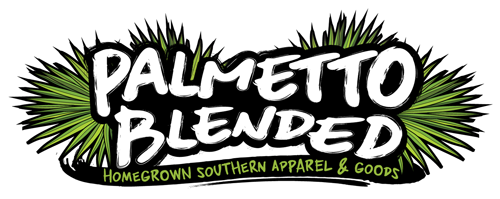
Creating Custom T-Shirts: How Does Screen Printing Work?
If you’ve ever designed a customized t-shirt or talked to an art student, you’ve probably heard of screen printing. Most of us have the general fuzzy idea that it has something to do with paint and maybe silk somewhere. But what exactly is involved in the screen printing process?
If you’ve ever wanted to learn how screen printing works, read on to learn more about the process.
The Screen Part
As you may have guessed from the name, screen printing involves, well, a screen. When the technique was first invented, this screen was made of silk. If you’ve heard the technique called silk screening, that’s why; these days, screens are made of polyester.
The screen creates a fine mesh that paint can pass through, but only in certain areas. When you start making the screen for a print job, you create a negative of your image on the screen and block off some of the holes in the mesh. This creates a sort of stencil in the shape of your design.
Making the Colors
Once your screen stencil is ready to go, it’s time to bust out the paints. If you get your screen printing done in a professional shop, they will spend a lot of time making sure the colors exactly match those on your design. This will involve a lot of mixing and testing the paint on the specific material and color you’re getting printed.
If your design has more than one color, the process will use more than one stencil and paint layer. For example, if you have a Venn diagram that has blue and yellow circles overlapping to make green, the first screen will print only the first circle in blue. The second screen will print the full second circle in yellow, creating both the yellow circle and the green portion in the middle.
Printing and Drying
Once all the paint and screens are ready, it’s time to begin the printing process! Each piece to be printed gets lined up and then has a screen placed on top of it. The paint for that layer gets pushed through the screen with a scraper, landing on the t-shirt in the specific pattern the stencil allows.
When the painting process is done and all the layers have been applied, the pieces get dried to cure the paint. If you’re doing this at home, it may mean sending your piece for a tumble in the dryer. But at larger commercial factories, they have special drying rollers they put pieces through to set the paint.
Get the Best Screen Printing
Screen printing is a great way to produce custom t-shirts, bags, or any other fabric material, especially if you want a bunch of the same product. It’s a fascinating way of creating patterns, and the process is mesmerizing to watch. If you haven’t, we recommend you check out some YouTube videos that show the screen printing process.
If you’d like to get screen-printed goods, reach out to us at Palmetto Blended. We are a well-renowned name in printing services and will get you products that are sure to thrill. Contact us today to get started on your next project.
Related Posts
-

Printed in the Palmetto State: How Local Brands Are Shaping Carolina Style
There’s something special about the South Carolina way of life — a blend of laid-back charm, local pride, and coastal...
-

Find the Best T-Shirt Screen Printing Near Me: Discover Palmetto Blended
Are you on the hunt for high-quality t-shirt screen printing near you? Look no further than Palmetto Blended, your go...
-

Back-to-School Basics: Top Custom T-Shirts for Every Student
Back-to-School Basics: Top Custom T-Shirts for Every Student As summer winds down and the back-to-school buzz begins,...
-

Trendiest Promotional Products for July 2024
As the summer heat peaks and the excitement of July celebrations unfolds, it’s the perfect time to spotlight the tren...
-

Custom Hoodies & Sweatshirts: Design Your Own Hoodie
In the realm of casual wear, hoodies and sweatshirts reign supreme. They're not just comfortable and cozy; they're ca...
-
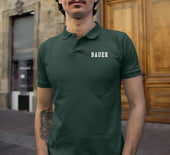
The Power of Custom Polo Shirts
Custom polo shirts are more than just apparel; they are a statement. They represent your brand, your team, or your ev...
-

Transitioning Your Wardrobe: From South Carolina Summers to Cozy Falls
As the golden hues of fall gradually replace the vibrant tones of summer in South Carolina, it's time to rethink our ...
-

How to Promote Your Brand on a Custom Beanie
These days it's all about brand awareness. Millennials know this and 63% of them are willing to share their data in e...
-
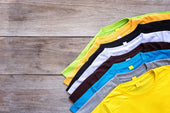
Boost School Spirit With Custom School Shirts
As a teacher or school administrator, your job is to ensure your students are comfortable enough to be who they want ...
-

Elevate Your Company Branding with Custom T-Shirts: Charleston Business Guide
In the bustling business landscape of Charleston, South Carolina, creating a unique brand identity is crucial for sta...
-
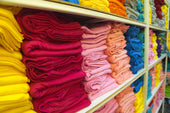
How Much Does It Cost to Print 1,000 T-Shirts? Factors that Determine the Price
Are you considering printing a bulk order of 1,000 t-shirts for your business, event, or organization? One of the fir...
-

Stay Cool this Summer with 5 Custom Screen Printed Apparel Ideas
As the temperatures rise and the sun shines bright, it's essential for brands to find creative ways to beat the summe...
-

How Custom Hats Can Build Brand Awareness for Business Owners
Business is booming in the Charleston area, making Charleston the city with the second-highest job growth in the nati...
-

How Different Branded Apparel Can Help You Build a Premium Brand
Everyone likes clothes, there's no doubt about that. Fashion brands produce between 100 to 150 billion clothing items...
-

Graphic Design Trends for Custom T-Shirts
Research suggests that, on average, consumers hang onto promotional t-shirts for 14 months. That gives you a little o...
-
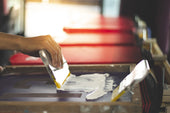
The Benefits of Screen Printing on T-Shirts and Hoodies
Go take a look at the shirts in your t-shirt drawer. We're willing to bet that many of them are starting to fade, wit...
-

Acid Wash Custom T shirt
Acid wash t-shirts are a popular clothing choice for many people, especially those who like to showcase a unique styl...
-

How to Get Custom Church Shirts
Did you know that there are nearly 400,000 churches in the United States? For this reason, many people sometimes find...
-

A Beginner's Guide to a Custom Shirt Maker
Did you know that personalization has been proven to substantially increase the connection that customers have with y...
-
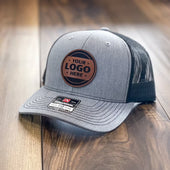
Custom Patches: A Design and Creation Guide
Are you tired of the same old boring branding options? Want to showcase your brand or community in a unique and eye-c...
-

How to Use Promotional Apparel to Grow Your Business
Are you a business owner looking for new and creative ways to promote your brand? Do you want to stand out from the c...
-

Creating a Swag Pack: 4 Promotional Items Everyone Loves
You have a rare chance to put your logo in the hands of an influencer, but you can only hand them one object. Do you ...
-
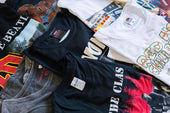
Sell Merch: A Guide for Aspiring Musical Artists and Bands
Are you a musician or a band seeking to create a lucrative income stream while building your brand? Well, you're in l...
-

An Introduction to Creating Eye-Catching Custom Hoodies
How many pieces of clothing do you think the average consumer owns? According to recent survey data, most of us hav...
-

Stay Cozy and Stylish: 5 Types of Custom Screen Printed Winter Apparel for Your Brand
As winter's chill settles in, it's the perfect time for brands to offer custom screen printed apparel that not only k...
-

Our State Flag Is On Everything, But What's On Our State Flag?
The SC State Flag has a long and storied history. In fact, the iconic blue-and-white design, featuring a palmetto tre...
-

T-shirt Charity Drive - Team Jonah
UPDATE: Thanks for the Love and Support - We Were Able to Raise $2,500 for Jonah's Family!
-

Cathedral Vacation Bible School T-shirts
Church Apparel T-shirts We are proud to have produced these super soft metallic gold ink Tees for Cathedral's Vacatio...
-
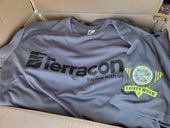
Terracon Custom Water Based Tshirts
Order up! Fresh water-based inks on super soft microfiber dry fit shirts. Get started on your T-shirt or Apparel proj...
-

7 Promotional Product Ideas For Businesses in SC
Did you know that the promotional products all the way back to 1789, when commemorative buttons were given out at Geo...
-
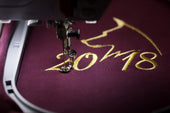
What Is the Average Cost of Embroidery Services in South Carolina?
What Is the Average Cost of Embroidery Services in South Carolina? Studies show that consistently presenting your bra...
-

5 Things to Consider When You Hire a Graphic Designer in Hilton Head
5 Things to Consider When You Hire a Graphic Designer in Hilton Head Good graphic design can make a big difference t...
-

A Quick Guide to Hiring a Web Designer in South Carolina
A Quick Guide to Hiring a Web Designer in South Carolina Are you a South Carolina business owner looking to jumpstart...
-

5 Promotional Products South Carolinians Will Love
5 Promotional Products South Carolinians Will Love Your audience is ready for something new. It's time to get creati...
-
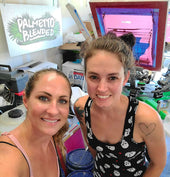
Benefits of Using Screen Printing Services in Charleston, SC
Benefits of Using Screen Printing Services in Charleston, SC An art form dating back to the third century, screen pri...
-

10 Effective Brand Awareness Strategies
Your brand is the story you tell your customers. It's the story around your customers that's based on them and their...
-

4 Trendy Website Design Ideas for 2020
Your website says a lot about your business that's a fact. This means that you must make it as aesthetically pleasing...
-

Tips and Tricks on How to Choose a Logo Font
Are you currently making a logo for your business or company? During the process, picking a good logo font can be th...
-

5 Promotional Items to Encourage a Healthy Lifestyle
Promoting your business by using promotional items is one of the best ways to make people aware of your brand. If yo...
-

8 Advantages of Hiring a Website Design Company
In today's digital world, having a website is essentialto your business. And while it can be tempting to try to build...
-
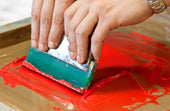
Screen Printing Vs. Embroidery: Which One Should You Choose?
As a business, it's important to stand out. Logos serve to represent your company and they should be recognizable. S...
-
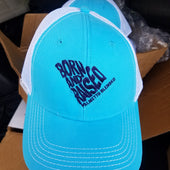
Embroidery 101: How Does Embroidery Work?
89% of people remember brands from promotional products for up to 2 years. Embroidered products like bags, shirts, a...
-

T-Shirt Design: 5 Popular Custom T-Shirt Trends You Should Know About in 2020
Here's the deal: the market for custom T-shirts is expected to hit more than $10 billion by the year 2025. Are you i...
-

7 Most Prominent Web Design Trends in 2020
According to statistics, customers will have a solid impression of a business within the first 7 seconds of interact...
-

4 Major Reasons You Need to Keep Your Website Updated in 2020
As a small business owner, you should understand how important your website is to your success. Without a great webs...
-

Fun Fashion: The Top 4 South Carolina Apparel Items All Wardrobes Need
Whether you've visited South Carolina, or you're one of their lucky residents, you likely have a great deal of pride ...
-

3 Top Styles Your Store Needs to Order for a Successful Tshirt Sale
T-shirts are powerful marketing tools. They feature your logo or message directly, and they show the wearer’s confide...
-

SC Style: How to Find the Best South Carolina Shirts and Apparel
South Carolina pride runs deep. Locals are proud of their roots. And tourists develop a lasting love for the lush la...
-

A Trip to Remember: 4 Must-Have South Carolina Souvenirs
Be careful when you visit South Carolina. All it takes is one trip for this beautiful state to sink its teeth into yo...
-

Top 9 T-Shirt Design Trends of 2019
Create a stylish design that will grab the attention of your peers! Here are the top t shirt trends of 2019. Did yo...
